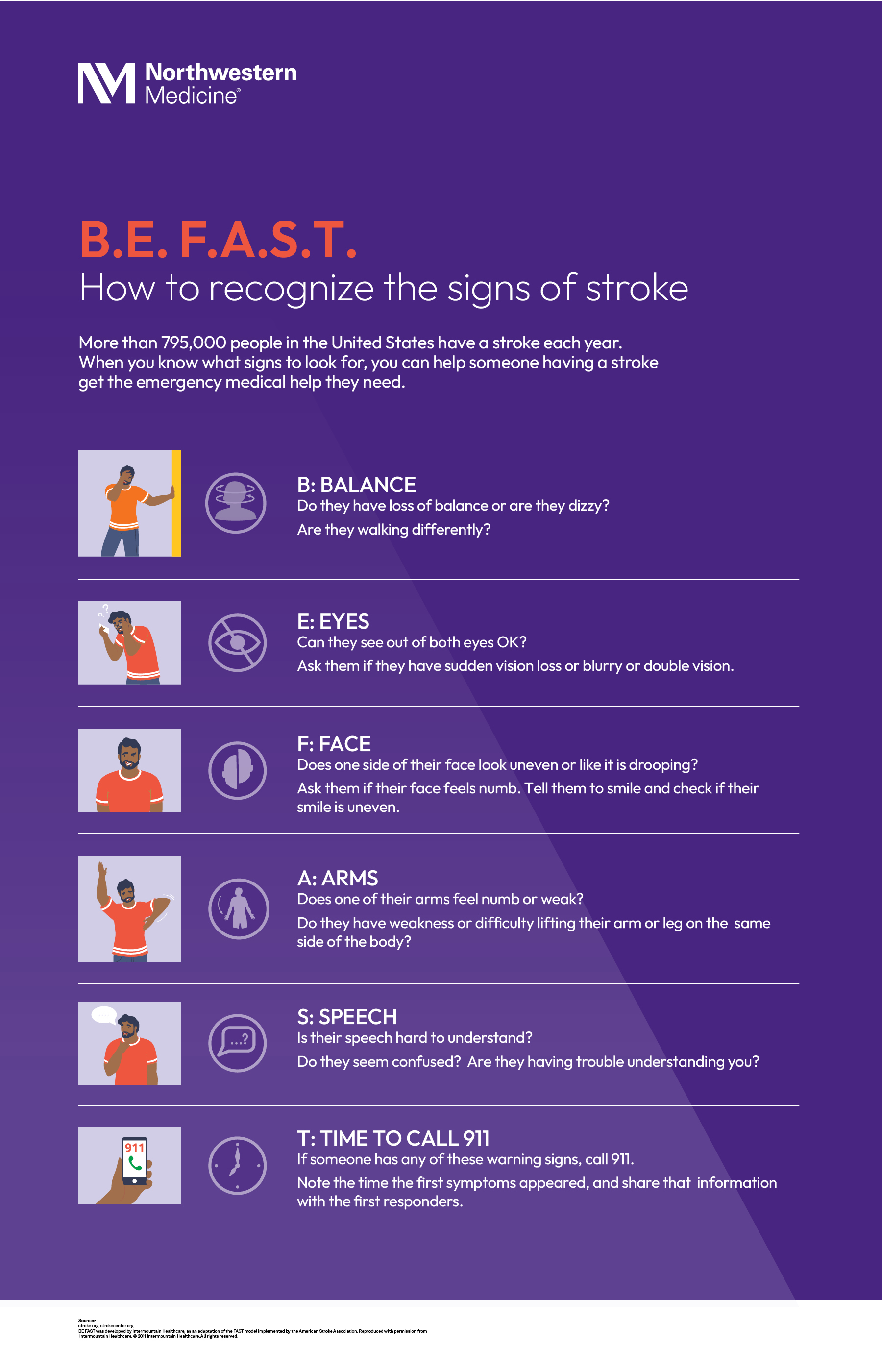Warning Signs of a Stroke
Learn the B.E. F.A.S.T. Acronym
Updated June 2025
Every 40 seconds, someone in the United States has a stroke. And, every four minutes, someone dies of a stroke. The sooner you receive treatment, the better your chance of survival and neurological recovery. Knowing the warning signs of a stroke can be life-saving.
A stroke occurs when a blood vessel that carries oxygen and nutrients to the brain gets blocked or bursts.
There are two different types of stroke: ischemic and hemorrhagic.
- About 87% of strokes are ischemic. They occur when a blood clot blocks blood flow to the brain.
- A hemorrhagic stroke occurs when a weakened blood vessel ruptures and bleeds into or around the brain, causing swelling and pressure as blood builds up.
- A transient ischemic attack (TIA), or "mini stroke," can also occur when blood flow is temporarily blocked to the brain.
High blood pressure is a major risk factor for strokes. Being physically active, making healthy food choices and not smoking can help lower your risk for stroke.
Both ischemic and hemorrhagic strokes can deprive brain cells of oxygen. This can lead to permanent loss of speech, movement or memory and even be life-threatening. But, receiving prompt medical treatment may reduce the risk of these effects.
The B.E. F.A.S.T.* acronym can help you recognize the signs of a stroke.

*B.E. F.A.S.T. was developed by Intermountain Healthcare as an adaptation of the F.A.S.T. model implemented by the American Stroke Association. Reproduced with permission from Intermountain Healthcare. © 2011 Intermountain Healthcare. All rights reserved.
Download Warning Signs of a Stroke






